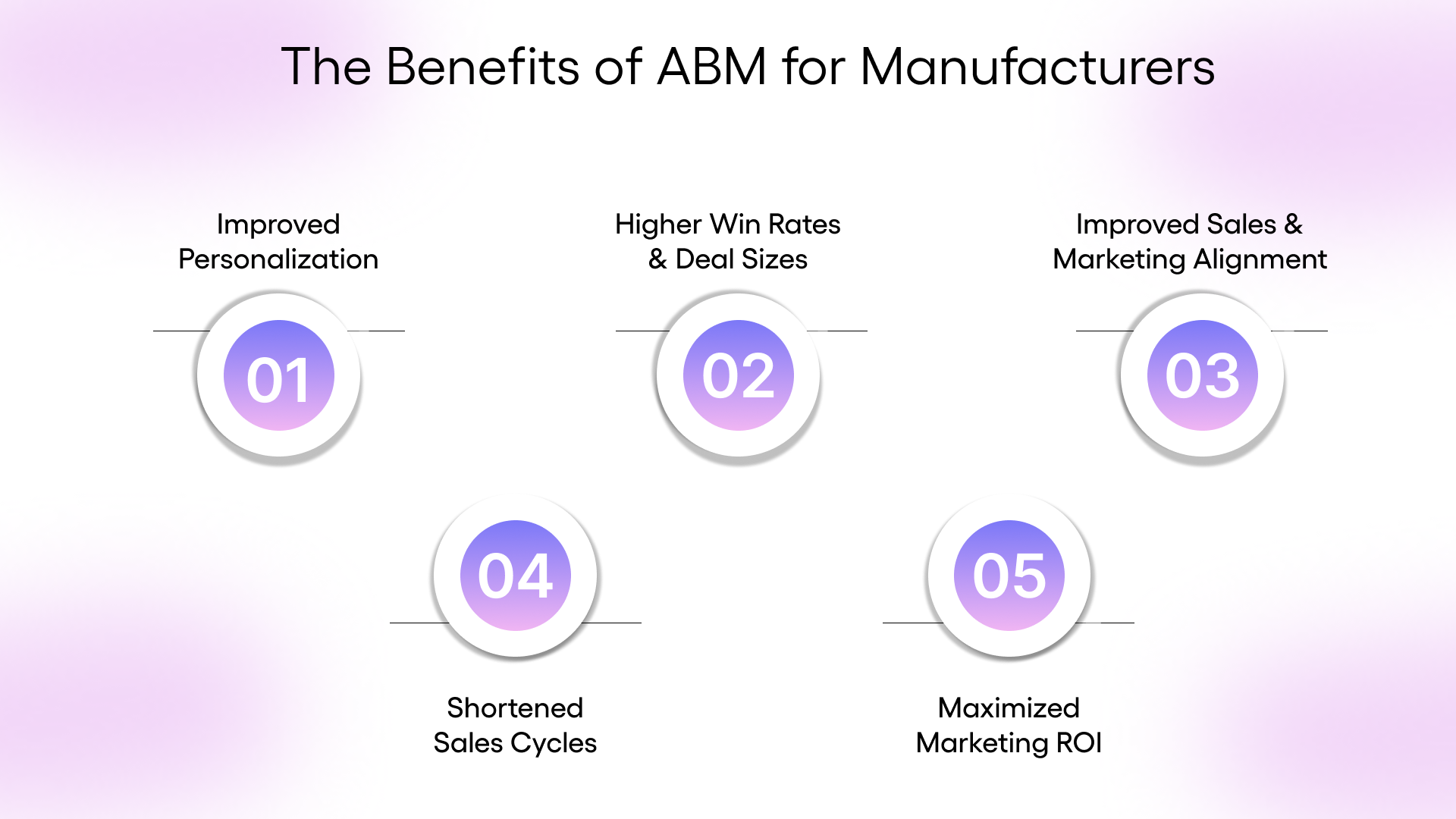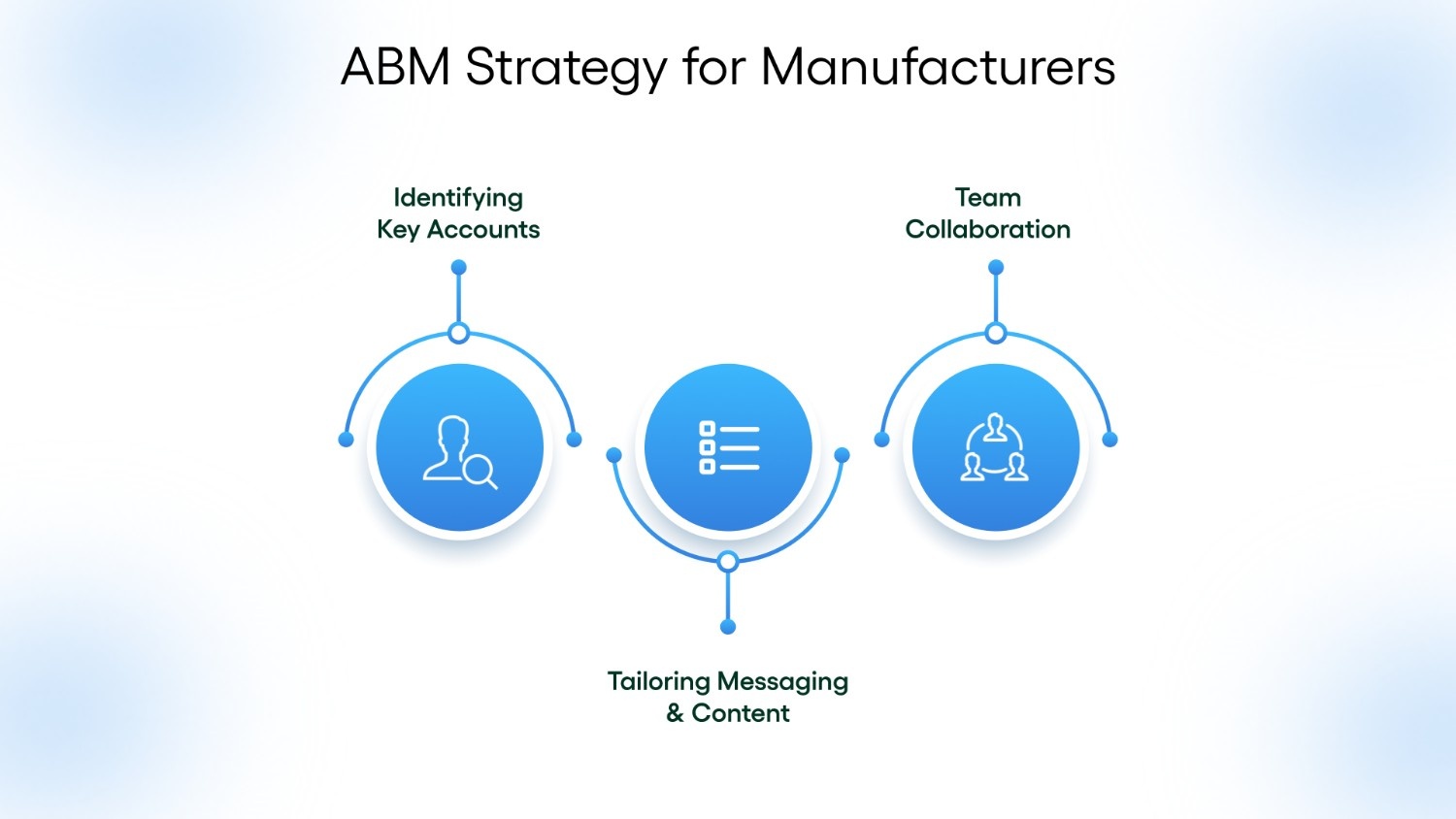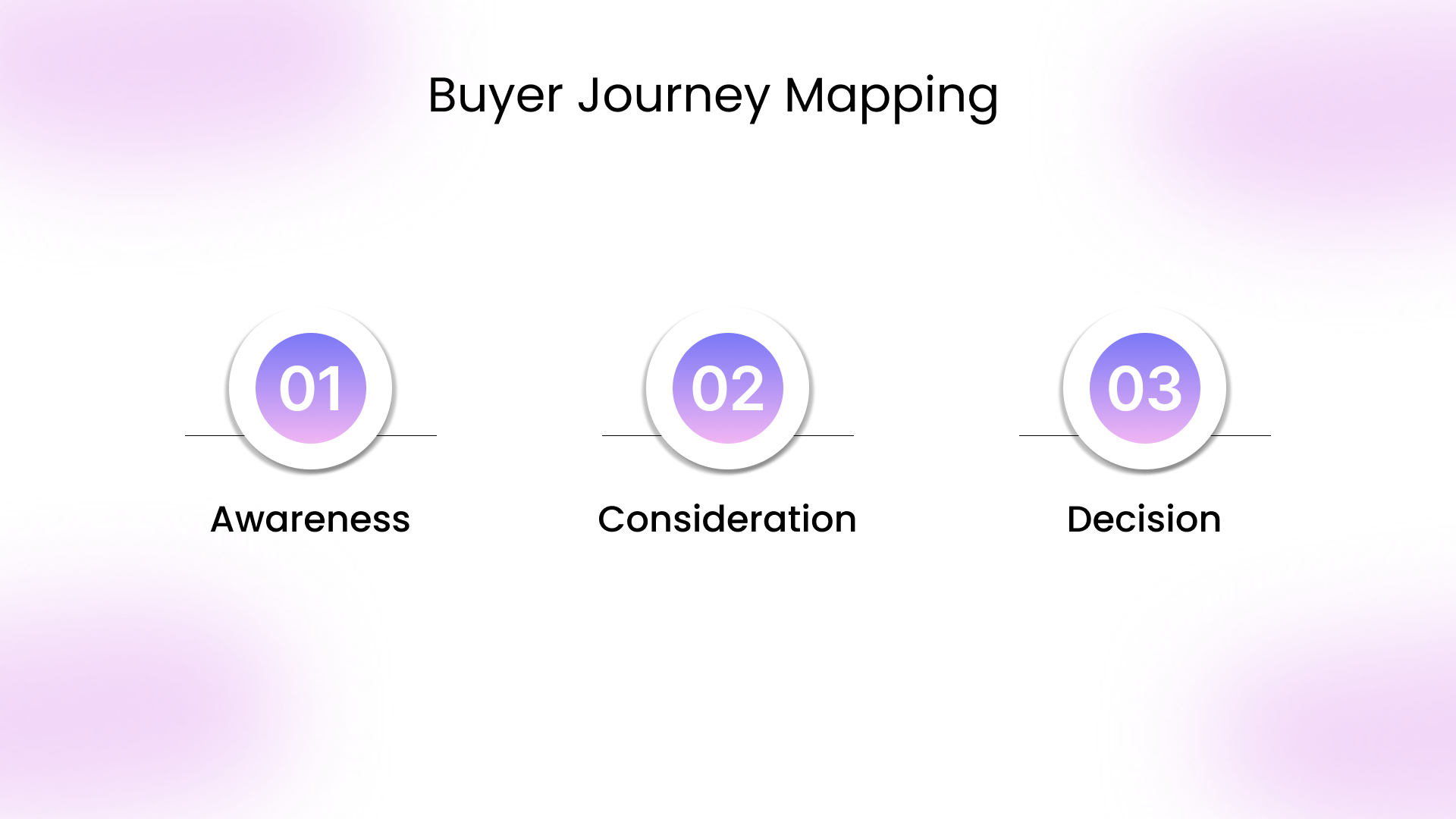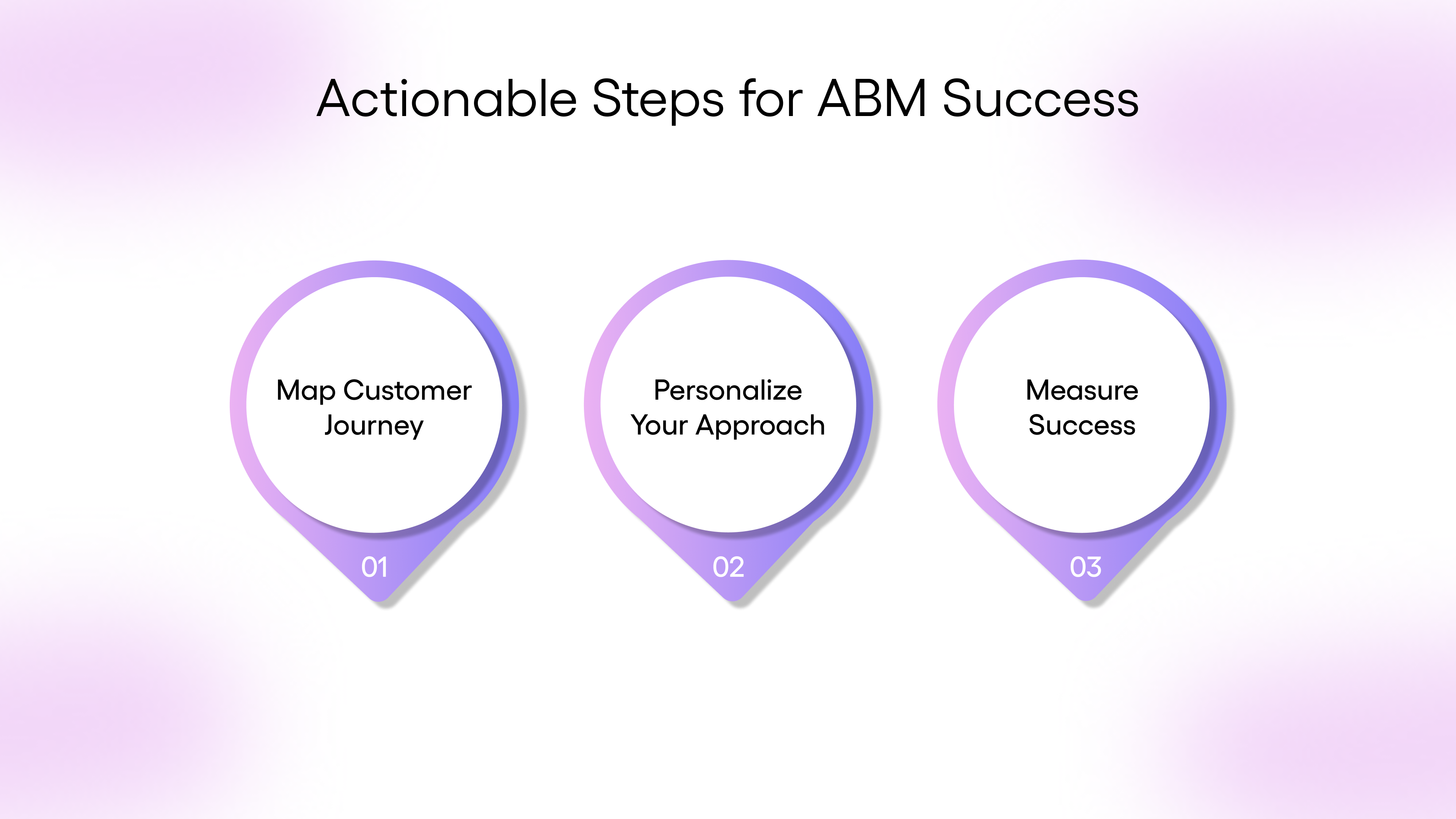
Effective Account-Based Marketing Strategies for Manufacturers

Manufacturers know the struggle. Long sales cycles, limited market data, and the challenge of reaching the right decision-makers. With a small pool of potential customers and a lengthy buying process, it’s easy to feel like marketing efforts are falling short.
But what if there was a smarter, more focused approach? Enter Account-Based Marketing (ABM). ABM helps manufacturers laser-focus on high-value accounts, offering tailored experiences to the right decision-makers, speeding up those drawn-out sales cycles, and driving more impactful results.
Don’t just take our word for it, research shows that 99% of companies with ABM programs report higher ROI compared to traditional marketing methods. ABM doesn’t just bring in more leads; it brings in the right ones, helping manufacturers make the most of their marketing resources.
In this guide, we'll explore how ABM can benefit the manufacturing sector, from creating an effective strategy to excelling at ABM campaigns, all while improving sales, marketing alignment, and customer relationships.
Key Takeaways
- What ABM Is: A strategy focusing on high-value accounts, delivering personalized engagement for faster sales cycles.
- Key Benefits for Manufacturers: Increases win rates, larger deals, improved sales-marketing alignment, and higher ROI.
- How to Implement: Identify high-value accounts, personalize outreach, and use cross-team collaboration to enhance effectiveness.
- Effective Strategies: Leverage data-driven insights, create targeted content, and engage through multi-channel campaigns.
- Measure Success: Use KPIs to track engagement, conversions, and ROI to refine your ABM approach.
What is Account-Based Marketing (ABM)?
Account-Based Marketing (ABM) is a strategic marketing approach that focuses on targeting specific, high-value accounts rather than casting a wide net for a broad audience. This means tailoring marketing efforts to treat each account as an individual "market of one" with personalized content, messaging, and experiences that speak directly to the needs of key decision-makers.
For manufacturers, ABM allows for a more efficient approach to marketing by targeting accounts that are most likely to bring the highest returns. With ABM, manufacturers can personalize their messaging and interactions with key decision-makers at targeted accounts, addressing their unique pain points, business needs, and goals. This level of focus ensures that marketing efforts are more effective and resources are allocated efficiently, leading to higher conversion rates and more significant deal sizes.
The Benefits of ABM for Manufacturers

ABM offers manufacturers a targeted approach that maximizes the impact of marketing efforts, focusing on high-value accounts to drive faster sales cycles, larger deals, and improved ROI. Let's look at the key benefits ABM brings to manufacturers:
- Improved Personalization: ABM enables manufacturers to deliver highly personalized marketing messages tailored to the specific needs of each targeted account. This approach allows manufacturers to create content and campaigns that resonate with key decision-makers. They can address their unique challenges and offer solutions that are most relevant to their business.
- Increased Win Rates and Deal Sizes: The power of ABM is in its ability to drive higher win rates and larger deals. According to the 2024 ABA Survey Report, companies that align ABM with Account-Based Advertising see 60% higher win rates. By targeting high-value accounts, manufacturers can focus their resources on prospects that are most likely to close, leading to larger sales and higher revenue.
- Better Marketing and Sales Alignment: ABM promotes better collaboration between marketing, sales, and customer success teams. These teams work together to identify high-value accounts, create personalized content, and engage decision-makers more effectively.
- Shortened Sales Cycles: By engaging with decision-makers early in the buying process, ABM helps shorten sales cycles. With personalized and targeted marketing efforts, manufacturers can influence the buying decision before the prospect formally enters the sales funnel.
- Maximized Marketing ROI: ABM provides one of the highest returns on investment among B2B marketing strategies. By focusing on high-value accounts, manufacturers can ensure that their marketing efforts are spent on the most promising prospects.
Whether you’re just beginning to implement ABM or looking to refine your current strategy, the benefits are clear: ABM offers a targeted, efficient way to grow your business and improve your bottom line.
Also read: How to Build an Email Marketing List in 2025
Key Components of a Successful ABM Strategy for Manufacturers

Ready to implement Account-Based Marketing (ABM) in your manufacturing business? ABM allows you to focus your resources on the right accounts, streamlining your marketing efforts and speeding up sales cycles. Let’s break it down step by step, so you can start building a more targeted, personalized approach that drives real results.
1. Identifying High-Value Accounts
The first step in any ABM strategy is identifying which accounts to target. You need to invest in data-driven methods to ensure you focus your resources on the accounts with the highest potential.
To target the right accounts, manufacturers should use research and data analytics tools. By analyzing historical data, CRM data, and intent signals, you can identify which accounts are more likely to benefit from your solutions.
Once you’ve collected the necessary data, the next step is creating your Target Account List (TAL). Your TAL should be focused on high-potential accounts based on various factors such as:
- Company Size: Larger companies may need more customized, large-scale solutions.
- Revenue Potential: Focus on accounts with high purchasing power.
- Industry Alignment: Ensure your product fits well with the industry's needs.
2. Personalizing Messaging and Content
To engage high-value accounts effectively, manufacturers need to personalize their messaging at every step of the customer journey.
Personalized content is key to a successful ABM campaign. For each account, create tailored content that speaks directly to their pain points, challenges, and needs. For example, a company looking to improve supply chain efficiency should receive content focusing on how your solutions can streamline operations.
Map out the buyer journey for each account to create targeted messaging for each stage:

- Awareness: Educational resources, industry reports.
- Consideration: Product demos, case studies.
- Decision: Testimonials, ROI calculators, personalized proposals.
Understanding where an account is in the journey allows you to craft the right message at the right time. ABM isn’t limited to one channel. Manufacturers should engage target accounts through various touchpoints:
- Email: Personalized outreach with relevant content.
- Social Media: LinkedIn messages and content.
- Events: Webinars, trade shows, or industry events.
Using a multi-channel approach increases the chances of engaging prospects and nurturing relationships at every stage.
3. Cross-Functional Team Collaboration
ABM requires seamless collaboration between multiple teams, including sales, marketing, and customer success. Alignment between these teams ensures smooth execution and maximizes the impact of your ABM campaigns.
Sales and Marketing Alignment
Sales and marketing teams must work together from the beginning to identify target accounts, agree on key metrics, and share insights. Regular meetings, shared goals, and joint metrics like lead scoring can ensure both teams are on the same page.
Regular Communication and Data Sharing
Centralized dashboards help teams stay aligned by giving real-time visibility into lead activity, account updates, and sales progress. When everyone works from the same data source, it's easier to share insights, track follow-ups, and keep opportunities moving forward without confusion or delays.
The goal is to provide consistent, personalized engagement to target accounts, regardless of the department.
Also Read: Definitive Guide to B2B Lead Generation Strategies
How to Implement ABM in Manufacturing?
Once you’ve identified the right accounts and set up your strategy, it’s time to implement ABM in your manufacturing business. Here’s a step-by-step framework to guide you:
Assess Readiness
Before moving into ABM, manufacturers need to assess whether they have the right foundation in place. Start by answering the following questions:
- High-Value Accounts: Do you have a list of high-potential accounts?
- Team Alignment: Confirm that sales and marketing teams are aligned and ready to collaborate.
Once your readiness is assessed, follow these actionable steps to build a successful ABM strategy for your manufacturing business:

Step 1: Research and Map Customer Journey
Understanding the buyer's journey for each account is crucial to tailoring your marketing efforts. Break down the journey into the following stages:
- Awareness: How do they first learn about your company? What are their initial pain points?
- Consideration: What solutions are they exploring? How does your product solve their problem?
- Decision: What factors are they weighing? How can you close the deal?
By mapping out this journey, you can identify the right content and touchpoints to engage them at each stage, from awareness to decision-making.
Step 2: Personalize Your Approach
Personalization is key to ABM success. Every account should receive content tailored specifically to their needs. Here’s how you can do this:
- Use Multi-Channel Campaigns: Engage your target accounts through email, social media, events, and direct mail to keep the conversation going across different touchpoints.
- Tailor Content: Create personalized content such as case studies, white papers, or webinars that speak directly to the pain points of each account. For example, a manufacturing company targeting the automotive industry might focus on improving supply chain efficiency or reducing costs.
The more personalized your approach, the more likely you are to build a connection and move prospects down the funnel.
Step 3: Measure Success
Like any marketing strategy, it’s essential to measure the performance of your ABM campaigns. Regularly assess your campaigns based on the following Key Performance Indicators (KPIs):
- Engagement Rates: How many target accounts are interacting with your content?
- Conversion Rates: How many target accounts are moving forward in the sales cycle?
- ROI: Are your ABM efforts yielding a positive return on investment?
This data helps you optimize your campaigns, refine your messaging, and focus on the most promising accounts.
Also Read: How to Start Email Marketing Campaigns for Startups
Rhode Island-based MSP Used TLM to Achieve 15x Revenue Growth
A well-established Managed Service Provider (MSP) in Rhode Island needed a partner to help boost their customer reach and prepare for future acquisitions. Despite having a solid team of 20 full-time technicians, they were struggling to secure managed IT contracts for companies with 11-50 employees, and they wanted a proven agency to help grow their business.
TLM, with nine years of experience serving MSPs, was the perfect fit. We focused on targeting companies within the 11-50 employee range and engaged key decision-makers with a targeted four-touchpoint email campaign each month. Our approach highlighted the client’s services and ensured the accuracy of our mailing list with dedicated lead identification teams.
In just four years, we helped add 18 new customers, two of which brought in significant monthly recurring revenue of $13,500 and $17,000.
TLM specializes in B2B email marketing strategies, delivering measurable, sustainable results. Our approach is built on years of experience, helping businesses like yours generate high-quality leads and improve conversions. We focus on creating precise, targeted email lists with advanced segmentation techniques, ensuring your messages reach the most relevant prospects.
Our personalized campaigns resonate with each audience segment, driving higher engagement and conversions. We integrate Account-Based Marketing (ABM) to engage decision-makers at high-value accounts, accelerating the sales process. We handle appointment scheduling so your sales team can focus on closing deals, while data-driven optimization ensures every email brings you closer to your goals.
With TLM’s expertise, your B2B email marketing efforts will turn into a powerful engine for business growth, increasing your lead quality and strengthening customer relationships.
FAQs
1. What are the three types of account-based marketing?
ABM has three types: One-to-one (Strategic ABM), One-to-few (ABM Lite), and One-to-many (Programmatic ABM), each targeting different account volumes with varying levels of personalization.
2. Is account-based marketing B2B?
Yes, ABM is a B2B strategy focusing on engaging target accounts with personalized, tailored marketing efforts, aligning closely with sales teams to achieve better outcomes.
3. What are ABM platforms?
ABM platforms are software solutions that help B2B teams manage account-based marketing at scale, assisting in account selection, campaign planning, engagement, and performance tracking.
4. When to use ABM?
ABM is ideal when sales and marketing need alignment, personalized engagement is difficult at scale, or when working with a limited marketing budget and targeting high-value accounts.






